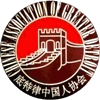The Chinese make up one of the largest foreign-born populations in America. They are concentrated primarily in California and New York and their numbers are growing.
They have established clan, regional, fraternal and commercial organizations. These associations have a strong influence on the culture of Chinese Americans. This Spotlight explores their history, development and current roles.
Chinatowns
Chinatowns are ethnic enclaves in metropolitan areas with a high clustering of Chinese residents. They serve as a center for commercial and cultural businesses, and are populated by Chinese restaurants, grocery stores, herbal medicine shops, and other Asian-themed outlets.
District associations, clan associations and other family and regional organizations also play an important role in the social life of Chinatowns. These organizations provide social services and support to the community. They also work to protect the interests of their members in dealings with local authorities.
They may also take steps to protect their neighborhoods from serious crime, such as gang activity. These organizations are called tongs, and they function as an inner-government imbued with quasi-governmental powers. These secret societies, rooted in traditional Chinese values, were created to give newcomers a sense of belonging and to create economic livelihoods when labor laws prevented them from working for non-Chinese employers. They were also a source of pride and identity.
Education
A recent study found that education plays an important role in the Chinese community. It increases women’s income and empowers them within their families. It also allows them to make better decisions. However, more research is needed to determine how this affects their well-being.
In China, the education system is dominated by Confucian values and prioritizes scholastic achievement. As a result, students are expected to be deferential towards their teachers. This approach has made schools a sensitive barometer of China’s broader political trends and priorities.
Local governments are working to improve the education system by addressing disparities in access and financing. For example, Shenzhen has waived school fees and Shanghai offers educational benefits to migrant children without the required urban hukou. This research examines the mediating role of social support and moderating effect of age in the association between education and subjective well-being (SWB) among rural residents in China. It is an important contribution to the literature as it helps us to understand how social support influences the relationship between education and SWB.
Religion
Religious communities have long been a central feature of Chinese life. They provide a counterbalance to the power of the state, as well as a space where individuals can express their beliefs and spirituality.
Stories like Xu Shoujie’s demonstrate how Christian rituals can achieve positive outcomes, such as the healing of an illness or the expulsion of demons. These narratives serve a strong proselytisation function and help to promote the Christian religion.
Moreover, they demonstrate how local Christian rituals interact with and are influenced by existing Chinese ritual spheres and calendars. This interweaving creates a new type of community, which characterises and defines its identity by establishing and reconstructing ritual spheres.
The integration of Christianity into the local Chinese calendars and ritual spheres challenged the existing patterns and rhythms that had defined local communities for centuries. For example, the introduction of the Christian liturgical calendar impacted on the way people celebrated festivals and negotiated calendrical conflicts.
Politics
The political structure of Chinese communities varies considerably depending on the time period and location. Historically the lower-class Chinese concentrated their activities in ethnic business sectors, which avoided competition with Caucasian American workers, but they also sought to gain citizenship and participate in local politics.
Those who aspired to open businesses or obtain employment within the community had to belong to clan and district associations, which favored their members in business matters. Membership in a clan association was based on monetary donations and volunteer work, so that poor relations with one’s association could mean exclusion from the ethnic economy.
Today’s Chinese community is diverse, with many people from the People’s Republic of China, Hong Kong, Macau and Taiwan. Some have strong ties to traditional culture, while others are more influenced by global influences. New types of charities, sports groups and other associations try to make Chinese feel at home in their new cities. This includes a wide range of income and social status levels, from impoverished working class residents to affluent upper-class families living in the suburbs.
